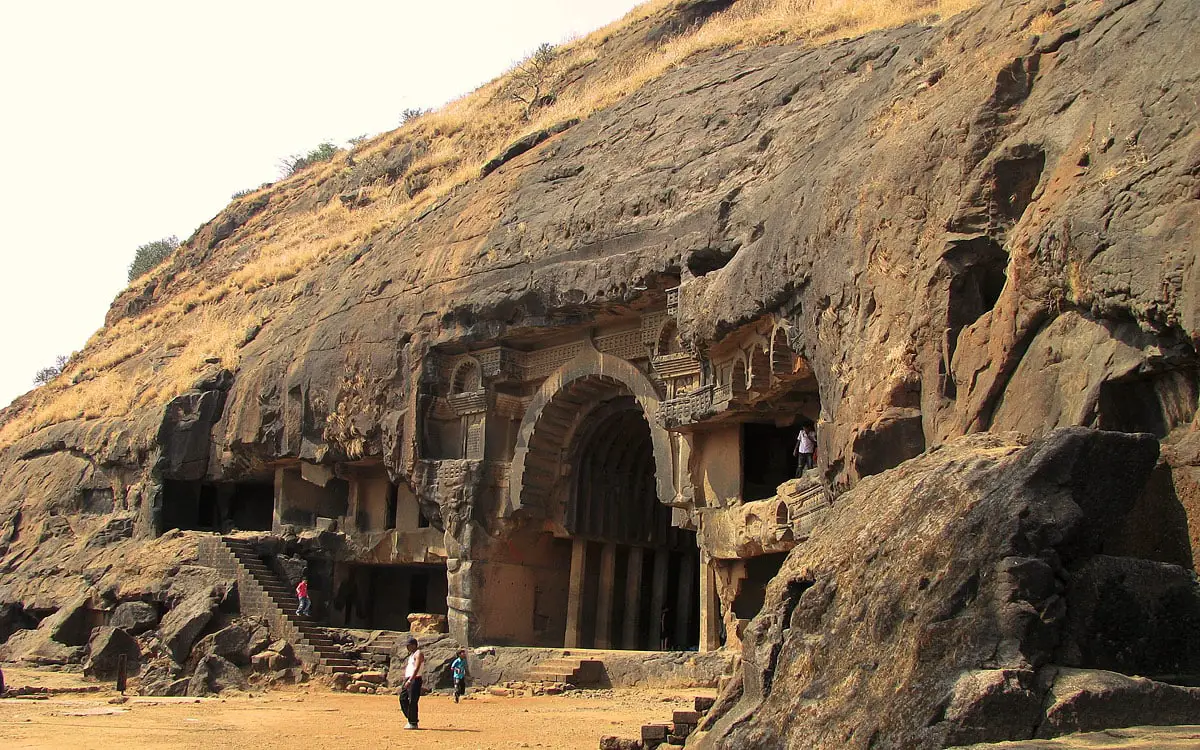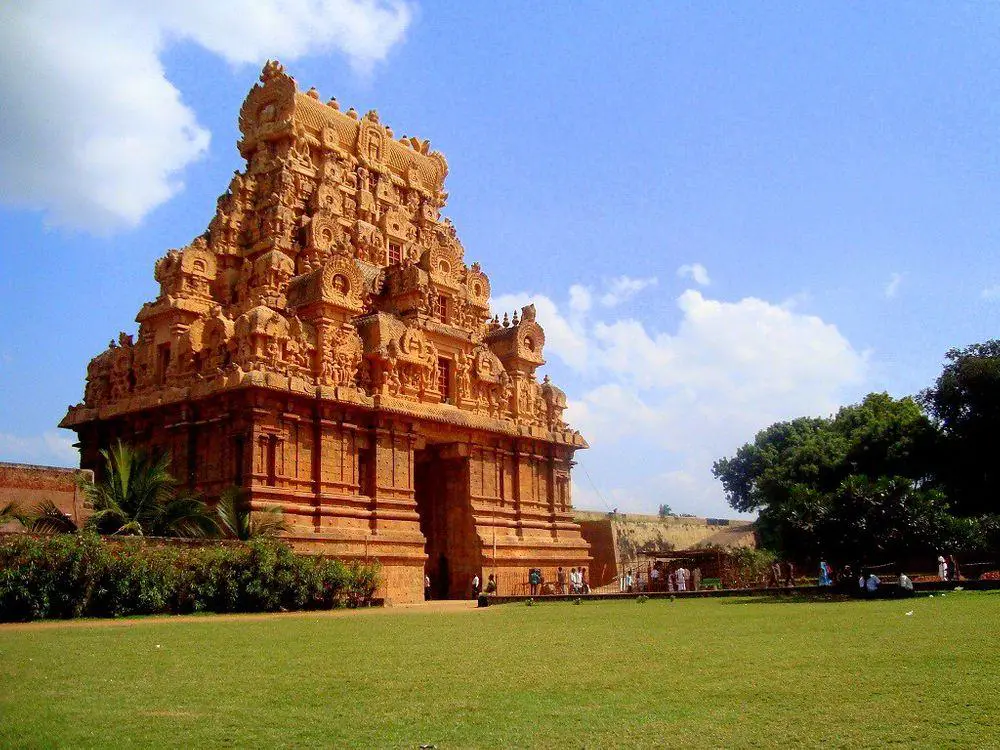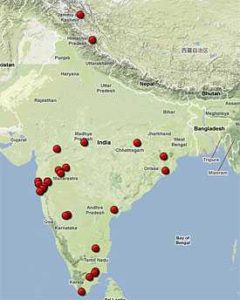Prehistoric cave and rock paintings 🢔 Petroglyphs and rock art 🢔 Archaeological wonders 🢔 Categories of wonders
Wonder
Ravan Chhaya rock shelter near Sitabinji
 In short
In short
There is an unsightly gap between two giant boulders near Sitabinji – a small village with an exciting history, named after the Sita stream flowing nearby. This shelter is the famous Ravan Chhaya (or Ravana Chhaya) – natural shelter which contains unique artwork – some 1,300 – 1,500 years old tempera painting.
 41.3%
41.3%
GPS coordinates
Alternate names
Age
Religion
Map of the site
If you see this after your page is loaded completely, leafletJS files are missing.
 In detail
In detail
Gap between boulders
The name of the shelter – “Ravan Chhaya” – can be explained in different ways – while direct translation is “shadow of Ravana” (a mythical, influential negative character in Ramayana), in Odisha, this means also a specific performance by shadow puppets.
The shelter has been formed by two giant granite boulders – the larger one leaning over the somewhat smaller one and forming a wedge-shaped gap between. This gap is up to 6.7 m high and 4.7 m deep. It provides a deep shade which certainly has helped to preserve the valuable artwork.
Values of history
This cave seems to be well known to people well before the painting appeared in it – thus, for example, it has been used by Shiva ascetics around the 4th – 6th century AD. Their object of worship was Mukhalinga (Mukha Linga) – linga with four faces of Shiva, still located in Sitabinji. This Mukhalinga is referred to in nearby inscriptions – these inscriptions serve as proof that Shaivism was dominant in Odisha already by the 5th century AD.
The site contains fragments of brick from an unidentified structure as well – these remnants contain Pali inscriptions. There are reported finds of Kushan coins and soapstone figurine as well – thus once upon a time, Sitabinji may have been a lively and active place.
Not too far from this site, there are rock shelters with much older drawings from the Mesolithic period. This artwork sometimes is referred to as “paintings of Sitabinji” as well.
Tempera painting
The tempera painting of Ravana Chhaya was made around the 7th century AD in high artistic and technical quality. Before applying tempera (fast-drying color) the rough surface of granite was smoothened with a thin coating of lime.
This drawing seems to have rather little in common with the Hindu religion. It shows a royal procession – a royal figure seated on an elephant and with a sword in hand, followed by the attendant woman. A band of footmen lead this procession, then follow horsemen and dancing women.
The theme has led to the theory that this shelter was a royal hunting retreat.
Below the painting there is a line of painted writing in Sanskrit from the 7th century – it reads the name of the king as Maharaja Sri Disabhanja.
This king could be the earliest Bhanja king – the Bhanja dynasty started to rule in Odisha around the 4th – 5th century AD.
In order to protect the painting from the water, there has been chiseled a protective groove above the painting. Unfortunately, the lower part of the painting is lost – attesting that it was wise to locate such artwork well above the reach of general visitors.
References
- Paul Yule, Early Historic Sites in Orissa, page 17. Accessed on 23 May 2010.
Ravan Chhaya rock shelter is included in the following list:
 Linked articles
Linked articles

Rock-cut architecture and sculptures
Rock-cut architecture is a very ancient form of architecture – the oldest structures are more than 5 thousand years old. The resistivity of the natural stone and the constant climate inside these structures has preserved many art values around the world.

Wonders of India
India is the seventh-largest country in the world by area, and, naturally, such a large area contains a huge amount of exciting attractions…
Wondermondo considers that India is the second richest center of architectural heritage in the world after Europe and maybe no single country in the world can match it in this respect.

Hindu shrines
Hinduism is one of the oldest religions – possibly the oldest one among contemporary religions and Hindu temples belong to the most impressive religious buildings in the world.
 Recommended books
Recommended books
India Unveiled: Spirit, Tradition, People
This is the one book you need to understand the spirit of India. Internationally acclaimed as the best book of its type on India, this sixth expanded, revised edition of the multi-award-winning book India Unveiled: Spirit, Tradition, People by Robert Arnett truly reveals the diversity and sacredness of the oldest continuously living civilization on earth.
India: A Sacred Geography
A spiritual history of the world’s most religiously complex and diverse society, from one of Harvard’s most respected scholars.



